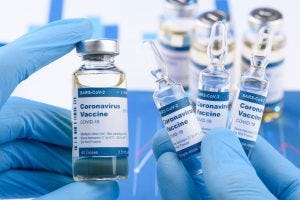Content Spotlight
Podcast: MilliporeSigma says education vital to creating unbreakable chain for sustainability
MilliporeSigma discusses the importance of people, education, and the benefits of embracing discomfort to bolster sustainability efforts.
August 7, 2020

Taking calculated risks will accelerate SARS-CoV-2 vaccine development according to CEPI, which says traditional techniques are too slow.
Developing a vaccine usually takes between six to 11.5 years according to the Gates Foundation backed Coalition for Epidemic Preparedness Innovations (CEPI).
In traditional development models target identification can take six months to two years, followed by preclinical testing and up to a decade of clinical development. Manufacturing scale up also takes years.

Image: iStock/nevodka
But the COVID-19 pandemic calls for a different approach according to Ingrid Kromann, CEPI’s head of CMC. She told online delegates at Bioprocess International Europe “Our goal is to have a paradigm shift and be able to develop a vaccine within 12 to 18 months.”
“We can only do this if we make choices and do some of the tasks in the development path at risk. And we have to be able to scale-up our products at risk” Kromann said, explaining that CEPI’s approach was to start process-scale up before it had clinical data.
She added that, “as soon as we have drug substance ready, we will start stockpiling that. And as soon as we know the final dose we will start to fill the final product into containers.”
“This is the way we are working in all the vaccines in our portfolio: scaling up at risk; scaling-out at risk” she said, adding “our goal is to ensure we have enough capacity and enough diversity in our production facilities.
CEPI’s portfolio includes SARS-CoV-2 vaccines being developed by Inovio, CSL, CureVac, Moderna, Clover Biopharma, Merck & Co and Thermis, Novavax, the University of Hong Kong and AstraZeneca and the University of Oxford.
CEPI uses an internal framework to accelerate programmes in its portfolio. Kromann told delegates that rather than being divided into clinical trial phases, the framework is split into early development, late stage development and pre-licensure.
“For early stage we need to have a process that is defined and to be sure that it can be produced at a CMC facility,” she said, adding that from a quality standpoint the process needs to be well described and accompanied by master batch records.
“For late stage,” Kromann continued, “you need to know that your process is fit for purpose and that you are able to scale-out and up and that you are able to produce more than 100 million doses per year.”
The framework also defines the formulation and stability characteristics required at each phase as well as setting out expectations for cold chain distribution and in-use monitoring.
Another CEPI effort to accelerate SARS-CoV-2 vaccine development and manufacture is the COVAX SWAT team it set up with the WHO, the Bill and Melinda Gates Foundation and the US NIH.
The Swat team is a joint effort to identify and address any common challenges that developers face according to Kromann, citing the manufacturing SWAT team which is split into three different task forces as an example.
“One of the task forces is focused on drug product: how to scale up; how to scale-out. That’s a common challenge for all our developers” she said “adding it’s the same for the drug substance.”
Risk is also key to CEPI’s plan to ensure there is sufficient global manufacturing capacity. Kromann said the organisation has identified 52 companies with vaccine capacity it believes could help make drug substance, adding that it is in discussion with two firms at present.
“One of the challenges is that we don’t know all the yields from our processes,” she said, adding “and it is very hard to calculate what will be needed to reach the 10 billion doses needed.
“We will not know the final dose before July, December or even later for some of the platforms,” Kromann said, adding “the yield and dose are essential to calculate how many doses we will be able to deliver. But time will tell, and we have to work in parallel.”
Likewise for drug product CEPI has identified 83 potential manufacturers, 16 of which have been approached.
“We see that two or three of the vaccines in our portfolio and they [the developers] will be able to produce two to four billion doses by the end of 2021.”
You May Also Like